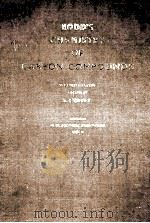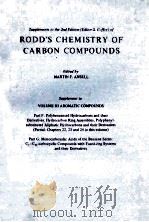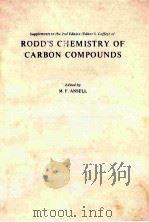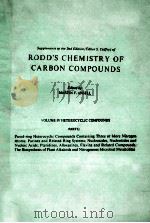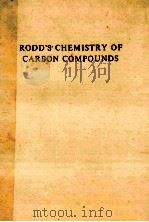《CHEMISTRY OF CARBON COMPOUNDS VOLUME IV PART B HETEROCYCLIC COMPOUNDS》
| 作者 | E.H. RODD 编者 |
|---|---|
| 出版 | ELSEVIER PUBLISHING COMPANY |
| 参考页数 | 1464 |
| 出版时间 | 1959(求助前请核对) 目录预览 |
| ISBN号 | 无 — 求助条款 |
| PDF编号 | 813341968(仅供预览,未存储实际文件) |
| 求助格式 | 扫描PDF(若分多册发行,每次仅能受理1册) |
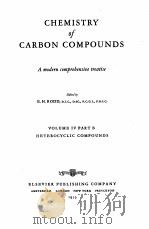
Chapter Ⅷ.Compounds Containing a Six-Membered Ring with One Hetero A tom,Oxygen or Sulphur&by NEIL CAMPBELL809
Introduction809
1.Pyran and its Derivatives810
a.Pyrans,Pyranols and Pyrones810
(ⅰ)α-and γ-Pyrans810
(ⅱ)Pyranols811
(ⅲ)Pyrylium Salts811
(ⅳ)α-and γ-Pyrones814
α-Pyrones815
Methods of Preparation815
Properties817
γ-Pyrones821
Constitution and Fine Structure821
Methods of Preparation822
Properties823
(ⅴ)Hydroxy-γ-pyrones828
(ⅵ)γ-Pyronecarboxylic Acids832
b.Dihydropyrans and their Oxidation Products835
(ⅰ)2:3-Dihydro-γ-pyran835
(ⅱ)5:6-Dihydro-α-pyran837
(ⅲ)Naturally Occurring Furodihydropyran Derivatives837
c.Tetrahydropyran and Derivatives839
2.5:6-Benzopyrans(Chromens)and their Derivatives841
a.Chromens and their Oxidation Products842
(ⅰ)Chromens,Alkyl-and Aryl-chromens842
(ⅱ)Chromenols(5:6-Benzopyranols)846
(ⅱa)Benzopyrylium or Chromylium Salts847
Methods of Synthesis847
Fine Structure of the Benzopyrylium Salts850
Properties850
(ⅱb)The Anthocyanins and Anthocyanidins855
Methods of Synthesis859
(ⅱc)Leucoanthocyanins867
(ⅲ)Cou-marin(5:6-Benzo-α-pyrone)and its Derivatives869
Synthesis869
Properties872
(ⅲa)Coumarin,Alkyl-and Aryl-coumarins875
(ⅲb)Hydroxycoumarins878
(ⅲc)Naturally Occurring Coumarin Deriva-tives880
(1)Naturally Occurring Hydroxycoumarins881
(2)Furo-coumarins883
(3)Coumarins Containing a Fused 2:2-Dimethyl-chromen Nucleus887
(ⅳ)Chromones(5:6-Benzo-γ-pyrones)888
Methods of Synthesis889
Structure and Properties893
(ⅳa)Chro-mone,Alkylchromones and Hydroxychromones897
(ⅳb)Naturally Occurring Chromones898
(1)Hydroxychromones898
(2)Furochro-mones900
(3)Pyranochromones902
(ⅳc)Flavones(2-Phenylchro-mones)903
(ⅳd)Flavonols(3-Hydroxyflavones)906
(ⅳe)Flavone and Flavonol Pigments907
Synthesis908
Hydroxyflavones with no 3-Hydroxyl Group910
Hydroxyflavones with a 3-Hydroxyl Group;Hydroxyflavonols914
Furoflavones920
(ⅳf)isoFlavones(3-Phenyl-chromones)921
Naturally Occurring isoFlavones924
b.Chroman(Dihydrochromen)and Derivatives927
(ⅰ)Chromans927
(ⅱ)Naturally Occurring Chromans928
Tocopherols928
Structure929
Properties931
(ⅲ)Phenylchromans(Flavan and isoFlavan)932
(ⅳ)Chromanols934
(ⅴ)Flavanols:the Catechins and Related Condensed Tannins935
Catechins935
Condensed Tan-nins940
(ⅵ)Chromanones942
Chromanochromanones.Rotenone and Related Substances944
(ⅶ)Flavanones,2-Phenylchroman-4-ones954
(ⅷ)Hydroxyflavanones956
(ⅸ)isoFlavanones,3-Phenyl-chroman-4-ones961
3.isoBenzopyran(3:4-Benzopyran)and its Derivatives961
a.isoCoumarins962
b.isoChroman and Derivatives965
4.Xanthen(2:3-5:6-Dibenzopyran)and its Derivatives966
a.Xanthen,Alkyl-and Aryl-xanthens966
b.Xanthhydrols and Xanthen Colouring Matters969
(ⅰ)Fluorones and Fluorimes970
(ⅱ)Xanthen Dyes971
(1)Pyronines972
(2)Rosamines and Rhodamines973
(3)Fluorescein and Related Compounds974
c.Xanthones976
Methods of Synthesis976
(ⅰ)Halogenoxanthones978
(ⅱ)Nitro-and Amino-xanthones979
(ⅲ)Hydroxyxanthones980
5.3:4-Benzochromen and its Derivatives983
6.5:6-Benzochromens and their Derivatives984
7.6:7-Benzochromens and their Derivatives985
8.7:8-Benzochromens and their Derivatives986
9.Benzo-and Dibenzo-xanthen Derivatives987
10.Thiapyran Derivatives988
a.Thiapyrans and Thiapyrones988
b.Hydrogenated Thiapyrans and Thiapyrones989
(ⅰ)Dihydrothiapyrans989
(ⅱ)Tetrahydrothiapyrans990
11.Thiachromens(5:6-Benzothiapyrans)and Derivatives992
a.5:6-Benzothiapyrans and 5:6-Benzothiapyrones992
(ⅰ)Thiachromens992
(ⅱ)Thiacoumarins993
(ⅲ)1-Thiachromones and 1-Thiaflavones993
b.Thiaehromans and Thiachromanones994
12.Dibenzothiapyran(Thiaxanthen)and Derivatives997
13.isoThiachromen(3:4-Benzothiapyran)and Derivatives1001
a.isoThiachromen and isoThiacoumarins1001
b.isoThiachroman and Derivatives1001
14.Bridged Ring Sulphur Compounds1002
Chapter Ⅸ.Brazilin and Haematoxylin&by Sir ROBERT ROBINSON1005
1.The Brazilin Group1005
Oxidation of O-Trimethylbrazilin by Means of Permanganate1007
Oxidation of O-Trimethylbrazilin by Means of Chromic Acid in Acetic Acid Solution1009
Brazilein and its Derivatives1013
The iso-Brazilein or Brazylium Salts1016
Synthesis of Brazylium and Other Indenobenzopyrylium Salts1017
Synthesis of Deoxytrimethylbrazi-lone and Trimethylbrazilone1018
The Constitution of Brazilein1019
Synthesis of Brazilin1020
2.The Haematoxylin Group1021
Permanganate Oxidation of d-Tetramethylhaematoxylin1021
Haematin and its Derivatives1022
Possible Natural Occurrence of a Haematoxylin Methyl Ether1023
Optical Rotatory Powers of Brazilin and Haematoxylin and their Derivatives1023
Chapter Ⅹ.Compounds Containing Two Fused Five-or Six-Mernbered Heterocyclic Rings Each of One Hetero Atom&by NEIL CAMPBELL1024
1.Compounds Containing Two Hetero Rings Fused to an Aromatic System1024
a.Pyranoquinolines1024
b.Bz-Pyrroloquinolines1025
c.Phenanthrolines1026
d.Dipyridonaphthalenes1027
2.Compounds Containing Two Hetero Rings Fused Through Adjacent Carbon Atoms1028
a.Furanoquinolines1028
b.Pyranoquinolines1030
c.Pyrrolopyridines or Diazaindenes1031
Carbolines1033
Indoloquinolines or Quinindolines1034
d.Naphthyridines or Pyridopyridines1035
3.Fused Heterocyclic Systems Having a Nitrogen Atom Common to Two Rings1038
a.Pyrrocolines1038
b.Pyridocolines1041
Norlupinane and Lupinane1042
c.Julolidine and Lilolidine1046
4.Bridged Ring Compounds1048
a.Compounds with Nitrogen Common to Two Rings1048
b.Bicyclic Systems Having a Nitrogen Bridge1051
Chapter Ⅺ.The Cyanine and Related Dyes&by G.DE W.ANDERSON1053
Introduction1053
1.Cyanines1054
Historical1054
Methods of Preparation1056
(ⅰ)Monomethincyani-nes1056
(ⅱ)Trimethincyanines1058
(ⅲ)Meso-substituted Unsym-metrical Trimethincyanines1060
(ⅳ)Symmetrical Trimethincyanines with Miscellaneous Chain Substituents1061
(ⅴ)Penta-and Higher Poly-methincyanines1062
Properties of the Cyanine Dyes1064
Typical Compounds1066
2.Azacyanines1068
3.Neocyanines and Related Dyes1069
4.Merocyanines1071
Methods of Preparation1072
Properties of the Merocyanine Dyes1074
Typical Compounds1075
5.Linear Tri-and Poly-nuclear Cyanines and Merocyanines1075
Properties1076
Typical Compounds1077
6.Oxonol Dyes1078
7.Styryl Dyes and N-Hemicyanines1079
Chapter Ⅻ.The Indigo Group&by T.S.STEVENS1081
Introduction1081
1.Indigo(Indigotin)and its Derivatives1083
Constitution1083
Synthetic Methods1085
Properties1087
(ⅰ)N-Derivatives of Indigo1089
(ⅱ)Derivatives of the Carbonyl Function1091
(ⅲ)Homologues of Indigo1091
(ⅳ)Halogeno-indigos1092
(ⅴ)Other Substituted Indigos1092
(ⅵ)Dehydroindigo1093
(ⅶ)Indigo-white1094
(ⅷ)Polycyclic Indigos1094
2.Indirubin1095
3.isoIndigo1097
4.Other Indigoid Pigments1098
a.Thioindigos1098
b.Thionaphthenindoleindigos1102
c.Vinylene Homologues of the Indigos1103
Chapter ⅩⅢ.The Pyrrole Pigments&by T.S.STEVENS1104
Introduction1104
1.Linear Pigments1105
a.Dipyrromethenes and Related Compounds1105
Methods of Synthesis1105
(ⅰ)Simple Dipyrromethenes1107
(ⅱ)Hydroxydipyrromethenes or their Tautomerides1109
(ⅲ)Tri-and Poly-nuclear Systems1110
b.Bile Pigments(Bilirubinoids)1111
Nomenclature1112
Synthetic Methods1114
(ⅰ)Bilitrienes1114
(ⅱ)Bilidienes1115
(ⅲ)Bilenes and Bilans1118
(ⅳ)Diagnostic Reactions1118
2.Macrocyclic Pigments:Unreduced Porphins1119
Synthetic Methods1120
General Properties1122
a.Porphin and its Simple Derivatives1124
b.Porphinpropionic Acids1126
c.Haemoglobin1128
(ⅰ)Structure of Protoporphyrin and Haemin1128
(ⅱ)Haemoglobin:Properties and Transformations1130
d.Other Porphyrin-Protein Complexes1131
e.Naturally Occurring Protein-free Porphyrins1133
3.Reduced Porphins.Chlorophyll1134
a.Synthetic Reduced Porphins1134
(ⅰ)Dihydroporphins1134
(ⅱ)Tetra-,Hexa-,and Octa-hydroporphins1138
b.Chlorophyll1139
Nomenclature1140
(ⅰ)Structure and Reactions of Chlorophyll-a1140
The Porphin Skeleton1140
The Homocyclic Ring1142
The Vinyl Group1143
The Phorbide-Porphyrin Relationship1143
The"Extra"Hydrogen Atoms:Location1144
Other Transformations of Chlorophyll-a1145
(ⅱ)Chlorophyll-b1146
(ⅲ)Absorption Spectra of Phorbides and Chlorins1147
(ⅳ)Bacteriochlorophyll1149
c.Biosynthesis of Porphyrins1149
d.Vitamin B12(Cyanocobalamine)1151
4.Aza-and Benzo-porphins;Phthalocyanines1154
a.Azaporphins1155
(ⅰ)Monoazaporphins1155
(ⅱ)Diazaporphins1155
(ⅲ)Tetraaza-porphins1156
b.Benzoporphins and Benzoazaporphins1156
Synthetic Methods1157
(ⅰ)Tetrabenzoporphin1158
(ⅱ)Tetrabenzo-mono-,-di-,and-tri-aza-porphins1158
(ⅲ)Tetrabenzotetraaza-porphins(Phthalocyanines)1159
(ⅳ)Macrocyclic Systems Related to Phthalocyanine1162
Chapter ⅩⅣ.Compounds Containing Unusual Hetero Aoms&by(Miss)I.G.M.CAMPBELL and(in part)T.S.STEVENS1163
1.Five Membered Rings with One Hetero Atom1163
a.Silicon Compounds1163
b.Phosphorus Compounds1164
c.Arsenic Compounds1166
d.Antimony Compounds1168
e.Halogen Compounds1169
2.Five Membered Rings with more than One Hetero Atom1170
a.Five Membered Rings Containing Silicon and Oxygen or Sulphur1170
b.Five Membered Rings Containing Phosphorus and Oxygen or Nitrogen1170
c.Five Membered Rings Containing Arsenic and Oxygen1171
d.Five Membered Rings Containing Arsenic and Sulphur1173
e.Five Membered Rings Containing Antimony and Oxygen1174
f.Five Membered Rings Containing Antimony and Sulphur1174
g.Five Membered Rings Containing Bismuth and Oxygen or Sulphur1175
3.Six Membered Rings Having One Hetero Atom1176
a.Silicon Compounds1176
b.Germanium,Tin and Lead Compounds1177
c.Phosphorus Compounds1178
d.Arsenic Compounds1180
(ⅰ)Arsacyclohexanes1180
(ⅱ)Tetrahydroarsinolines1181
(ⅲ)Ars-acridines1183
(ⅳ)Arsaphenanthrenes1183
(ⅴ)Arsaperinaphth-indane1184
e.Antimony and Bismuth Compounds1184
f.Iodine Compounds1185
4.Six Membered Rings with more than One Hetero Atom1186
a.Six Membered Rings Containing Silicon with Oxygen,Sulphur or Nitrogen1186
b.Six Membered Rings Containing Phosphorus with Oxygen or Nitrogen1189
c.Six Membered Rings Containing Arsenic with Oxygen,Sulphur or Nitrogen1190
d.Six Membered Rings Containing Antimony and Oxygen1193
e.Six Membered Rings Containing Two Phosphorus Atoms or Phos-phorus and Arsenic1194
f.Six Membered Rings Containing Two Arsenic Atoms1195
5.Seven Membered and Larger Rings1197
a.Silicon and Tin Compounds1197
b.Phosphorus and Arsenic Compounds1198
c.Larger Rings Containing Two Arsenic Atoms1199
d.Iodine Compounds1200
Bibliography1200
Chapter ⅩⅤ.Compounds Containing a Six Membered Ring with Two Hetero Atoms.The Diazines&by G.R.RAMAGE and(in part)J.K.LANDQUIST1201
1.The Pyridazine Group1201
a.Pyridazine and its Substitution Products1201
Methods of Synthesis1202
(ⅰ)Pyridazine and its Alkyl and Aryl Derivatives1204
(ⅱ)Halogenopyridazines1205
(ⅲ)Aminopyrida-zines1205
(ⅳ)Hydroxypyridazines(Pyridazones)1206
(ⅴ)Pyrida-zinecarboxylic Acids1209
b.Hydropyridazines1211
(ⅰ)Dihydropyridazines1211
(ⅱ)Tetrahydropyridazines1215
(ⅲ)Hexahydropyridazines(Piperidazines)1216
Benzopyridazines1217
c.Cinnoline and its Substitution Products1217
Methods of Synthesis1217
(ⅰ)Cinnoline and its Alkyl and Aryl Deri-vatives1218
(ⅱ)Reduced Cinnolines1220
(ⅲ)Halogenocinnolines1221
(ⅳ)Nitrocinnolines1222
(ⅴ)Aminocinnolines1223
(ⅵ)Hydroxycinnolines1228
(ⅶ)Cinnolinecarboxylic Acids1232
d.Benzo[c]cinnolines1233
(ⅰ)Benzo[c]cinnoline and its Alkyl Derivatives1234
(ⅱ)Halogeno-,Nitro-and Other Substituted Benzo[c]cinnolines1235
(ⅲ)Reduced Benzo[c]cinnolines1237
e.Other Benzocinnolines1237
f.Phthalazines1238
Methods of Synthesis1238
(ⅰ)Phthalazine,its Alkyl and Aryl Deri-vatives1239
(ⅱ)Reduced Phthalazines1240
(ⅲ)Halogenophthala-zines1241
(ⅳ)Aminophthalazines1242
(ⅴ)Hydroxyphthalazines and Dihydrophthalazines1244
(ⅵ)Phthalazine Compounds from Benzenediazonium Salts of 2-Naphthol-1-sulphonic acid1253
2.The Pyrimidine Group1257
a.Pyrimidine(1:3-Diazine)and its Substitution Products1257
Methods of Synthesis1257
Properties1260
(ⅰ)Pyrimidine,Alkyl-and Aryl-Pyrimidines1261
(ⅱ)Halogenopyrimidines1262
(ⅲ)Nitroso-and Nitro-Pyrimidines1264
(ⅳ)Aminopyrimidines1265
Monoaminopyrimidines1265
Di-and Poly-aminopyrimidines1269
(ⅴ)Hydroxypyrimidines1271
Monohydroxypyrimidines1271
Dihydroxypyrimidines1273
Hydrogenated Dihydroxypyrimidines1276
Trihydroxypyrimidines1276
Reactions of Barbituric Acid1278
Tetrahydroxypyrimidines1280
(ⅵ)Mercapto-and Alkylthio-Pyrimidines1281
(ⅶ)Aminohydroxypyrimidines1283
Monoamino-monohydroxypyrimidines1283
Diaminomonohydroxypyrimidines1285
Monoaminodihydroxypyrimidines1286
Diaminodihydroxy-pyrimidine1288
Monoaminohydroxypyrimidines1290
Triamino-monohydroxypyrimidines1291
(ⅷ)Pyrimidine Aldehydes1292
(ⅸ)Pyrimidinecarboxylic Acids1292
b.Hydrogenated Pyrimidines1295
Alloxan and Related Compounds1295
c.Quinazolines(Benzopyrimidines)1299
Methods of Synthesis1299
Properties and Reactions1301
(ⅰ)Quina-zoline and Homologues1305
(ⅱ)Chloroquinazolines1305
(ⅲ)Amino-quinazolines1306
(ⅳ)Hydroxyquinazolines(Quinazolones)and Mercap-toquinazolines1307
(ⅴ)Aldehydes and Ketones1311
(ⅵ)Carboxy-lic Acids1311
(ⅶ)Benzoquinazolines and Related Compounds1312
d.Hydrogenated Quinazolines1315
3.The Pyrazine Group1318
a.Pyrazines,1:4-Diazines1318
Methods of Synthesis1319
(ⅰ)Pyrazine,Alkyl-and Aryl-Pyrazines1320
(ⅱ)Halogenopyrazines1322
(ⅲ)Aminopyrazines1323
(ⅳ)Hydroxypyrazines1325
(ⅴ)Pyrazinecarboxylic Acids1329
Amino-and Hydroxy-pyrazinecarboxylic Acids1332
b.Hydropyrazines1333
(ⅰ)Dihydropyrazines1333
(ⅱ)Tetrahydropyrazines1336
(ⅲ)Pipera-zines(Hexahydropyrazines)1338
Methods of Synthesis1338
Stereo-chemistry of NN′-Disubstituted Piperazines1341
Piperazines with Sub-stituents on Carbon1342
Ketopiperazines(Oxopiperazines)1343
c.Quinoxalines(Benzopyrazines)1345
Methods of Synthesis1345
(ⅰ)Quinoxaline and its Alkyl and Aryl Derivatives1347
(ⅱ)Halogenated Quinoxalines1351
(ⅲ)Nitroquin-oxalines1353
(ⅳ)Aminoquinoxalines1353
(ⅴ)Hydroxyquinoxalines1355
2-Hydroxyquinoxalines1355
2:3-Dihydroxyquinoxalines1358
Bz-Hydroxyquinoxalines1360
(ⅵ)Quinoxaline-N-oxides1361
(ⅶ)2-Polyhydroxyalkylquinoxalines1362
(ⅷ)Quinoxaline-2-aldehydes1364
(ⅸ)Quinoxaline-2-carboxylic Acids1365
Quinoxaline-2:3-dicarboxylic Acids1367
d.Hydrogenated Quinoxalines1368
(ⅰ)1:2-Dihydroquinoxalines1368
(ⅱ)1:2:3:4-Tetrahydroquinoxalines1368
e.Phenazines(Dibenzopyrazines)1371
General Methods of Synthesis1372
(ⅰ)Phenazine and its Homologues1374
(ⅱ)Benzo-and Dibenzo-phenazines1376
(ⅲ)Halogenophena-zines1377
(ⅳ)Nitrophenazines and Phenazinesulphonic Acid1378
(ⅴ)Aminophenazines1380
(ⅵ)Hydroxyphenazines1381
Dihydroxy-phenazines1383
(ⅶ)Phenazinecarboxylic Acids1384
f.Hydrogenated Phenazines1385
(ⅰ)5:10-Dihydrophenazines1385
(ⅱ)1:2:3:4-Tetrahydrophenazines1387
(ⅲ)Oetahydrophenazines1388
(ⅳ)Dodecahydrophenazines1389
INDEX1391
1959《CHEMISTRY OF CARBON COMPOUNDS VOLUME IV PART B HETEROCYCLIC COMPOUNDS》由于是年代较久的资料都绝版了,几乎不可能购买到实物。如果大家为了学习确实需要,可向博主求助其电子版PDF文件(由E.H. RODD 1959 ELSEVIER PUBLISHING COMPANY 出版的版本) 。对合法合规的求助,我会当即受理并将下载地址发送给你。
高度相关资料
-
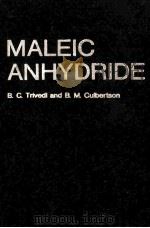
- MALEIC ANHYDRIDE
- 1982 PLENUM PRESS
-
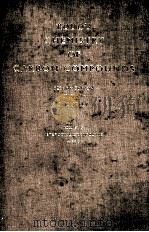
- RODD‘S CHEMISTRY OF CARBON COMPOUNDS SECOND EDITION VOLUME IV PART G
- 1978 ELSEVIER SCIENTIFIC PUBLISHING COMPANY
-

- RODD‘S CHEMISTRY OF CARBON COMPOUNDS SECOND EDITION VOLUME Ⅰ PART B
- 1965 ELSEVIER PUBLISHING COMPANY
-
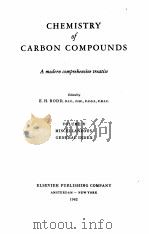
- CHEMISTRY OF CARBON COMPOUNDS VOLUME V
- 1962 ELSEVIER PUBLISHING COMPANY
-
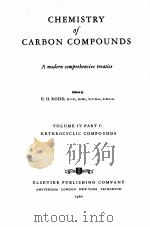
- CHEMISTRY OF CARBON COMPOUNDS VOLUME IV PART C HETEROCYCLIC COMPOUNDS
- 1960 ELSEVIER PUBLISHING COMPANY
-
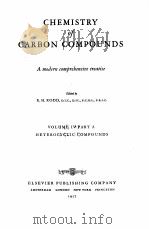
- CHEMISTRY OF CARBON COMPOUNDS VOLUME IV PART A HETEROCYCLIC COMPOUNDS
- 1957 ELSEVIER PUBLISHING COMPANY
-
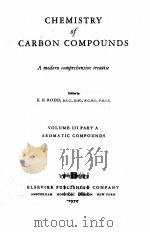
- CHEMISTRY OF CARBON COMPOUNDS VOLUME III PART A AROMATIC COMPOUNDS
- 1954 ELSEVIER PUBLISHING COMPANY
-

- THE CHEMISTRY OF HETEROCYCLIC COMPOUNDS
- 1961 ACADEMIC PRESS
-
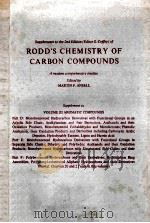
- ROSS'S CHEMISTRY OF CARBON COMPOUNDS VOLUME Ⅲ HETEROCYLIC COMPOUNDS PART D PART E PART F
- 1982 ELSEVIER
-
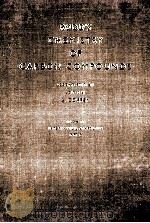
- ROSS'S CHEMISTRY OF CARBON COMPOUNDS VOLUME Ⅳ PART E
- 1977 ELSEVIER
提示:百度云已更名为百度网盘(百度盘),天翼云盘、微盘下载地址……暂未提供。➥ PDF文字可复制化或转WORD
